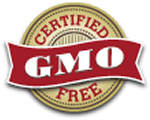We’d like to welcome Phil Cox, CEO of Legacy Food Storage, to our Food Storage Review Series. Phil has graciously shared his knowledge of the issue of GMOs in food storage, and how consumers can best determine if their food vendor meets GMO free requirements.
A Message from Phil Cox, CEO of Legacy Food Storage
The GMO (genetically modified organization) debate is in full force, from whether they are safe to consume to how GMO food should be labeled. While the heated discussions on the safety and labeling of GMO foods won’t be cooled anytime soon, one demanding fact remains: a majority of customers are asking for “non-GMO” or “GMO free” foods, and vendors – as always – are racing to give their customers what they want. It isn’t easy, but as we’ve discovered from a business perspective, it’s definitely worth it!
What Are GMOs?

GMOs, sometimes called genetically engineered or GE foods, are organisms that have been altered at the cellular level by either removing specific genes, or inserting new ones.
The idea of GMOs is to make crops more resistant to various ills such as pests and pesticides, weeds, and crop failure in order to increase yield.
However, many farmers report smaller yields when using GMO seeds, and there is rising concern about the safety of eating GMOs because of insufficient, unbiased research. The latter has convinced a significant number of consumers worldwide that only – “non GMO” or “GMO-free” – foods are safe for their families to consume.
What Does GMO Free Mean?
“GMO free” means suppliers must be able to certify that their ingredients cannot contain more than 0.9 percent GMO. If vendors want to claim their foods are “non-GMO,” their suppliers must be able to prove that farmers have planted non-GMO seeds, prevented pollen or other contaminants from drifting in from neighboring fields, and stored and transported the products (such as grain) separately from GMO crops. They must maintain the separation to the finished product. General Mills recently discovered how difficult (and expensive) it can be when it created its non-GMO version of Cheerios.

How Do Vendors Credibly Go GMO Free?
Ultimately, the burden of proof lies with the vendor, and in a world where GMOs are common fodder for many foods, gaining that proof is one challenges they need to undertake to keep their customers – and prospective customers – satisfied. But what do they need to do to credibly make the claim?
Here are four steps we’ve gone through to ensure we are GMO Free (and soon non-GMO):
1. Gather Certificates
When a food storage vendor wants to certify that it is GMO-free, it must obtain verification from every supplier it uses for each ingredient in each product. Legacy Food Storage, for example, requires each of our suppliers – 43 in fact – to provide certificates (USDA Organic Certification or another reputable GMO testing certification) that prove they don’t use GMO ingredients. (Note to consumers, ask any vendor for these certifications before you purchase. If you don’t get them, move on to the next vendor).
2. Test The Food
Having suppliers provide certificates stating they don’t use GMOs is not enough. The food must be tested in a lab to verify the absence of genetically engineered genes. We have our foods tested for the presence of GMOs by Biogenetic Services, Inc.
3. Change Ingredients and Create New Recipes
If the presence of GMOs has never before been a concern, chances are there will be GMOs detected during the first testing. When detected, it is imperative to find new suppliers or see if current suppliers offer GMO-free options. When creating new recipes, Legacy works with our suppliers to reinvent entrée recipes in an effort to provide the best ingredients possible and maintain great taste.
4. Maintain the Process
When a food storage vendor has done all it can to make sure its food is GMO-free, it isn’t done. To absolutely ensure food remains GMO-free, testing has to be done regularly with a commitment to change, if necessary. For example, after completing our initial testing and verification that our suppliers were certified GMO free, we learned that one of these suppliers had changed an ingredient to a GMO product without informing us. When we found out, we found a new supplier.
As GMOs increase in prevalence and more organisms are created with GM versions, it is essential to keep testing and to keep communication with suppliers open to ensure food is not contaminated. For consumers focused on only eating Non-GMO or GMO free foods, it’s important to keep asking your suppliers if they are following the guidelines.
Bio: Phillip Cox is the chief executive officer and co-owner of Legacy Food Storage, a manufacturer of good tasting, high-quality gourmet freeze-dried food meals for food storage and emergency use. Cox lives in Farmington, Utah, where he and his wife raise their four young children, making emergency preparedness essential.


Leave a Reply